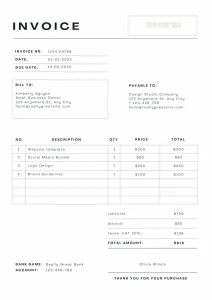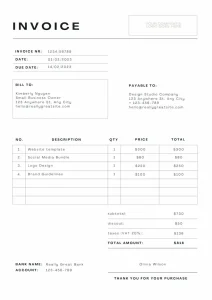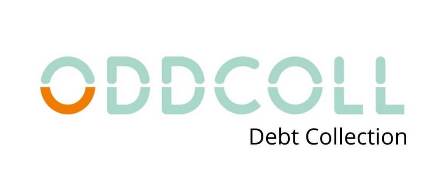What is an Invoice and What Is It Used for? 2024
Have you ever wondered what an invoice is and what it’s for? Although it may sound boring, invoices are an essential tool for any business that sells products or services on credit. And if you’re in charge of your company’s financial management, it’s important to understand how they work and how to issue invoices correctly.
In this article, we will explain in a simple way what an invoice is and what it is used for. In addition, we will show you the different types of invoices that exist and what kind of information they should contain. Don’t miss it!
What is an invoice?
An invoice is a commercial document that records the sale of goods or services by a supplier to a customer. It details the products or services sold, the unit price, the total to be paid and the taxes.
It is important to note that invoices also have a legal function, since they are a valid document to prove the existence of a commercial transaction. For this reason, companies are obliged to issue invoices in many countries and it is essential that you make sure you comply with local regulations regarding their issuance and content.
What is it for?
This document is essential for the financial management of any business, since it allows a detailed record to be kept of sales made and pending payments. In addition, it has several important functions for a business, among them are:
- Accounting record: Thanks to the invoice it is possible to make a record of sales and pending payments. In addition to facilitating the accounting and financial management of the company.
- Financial control: The invoice is a tool that helps you control the income and expenses of the business, which allows you to know clearly and accurately the status of accounts receivable and payable.
- Legal compliance: In many countries, companies are required by law to issue invoices to prove the existence of a business transaction, so the invoice is a fundamental document to comply with fiscal and tax regulations.
- Collection management: The invoice is a means to establish payment terms with the customer and to remind them that they have an outstanding obligation. In addition, in case of non-payment, the invoice is a document that can be used as evidence in a claim or lawsuit process. Remember that if you have overdue payments from invoices, Oddcoll is an international debt collector agency that guarantees successful payment. Contact now! We encourage to read Payment Reminder Email and How to Collect Unpaid Invoices.
When to issue an invoice?
The issuance of an invoice depends on the type of business transaction that has taken place. However, invoices must be issued in the following cases:
- Sales of goods or services on credit: Used when a credit sale has been processed, i.e. when the customer does not pay at the time of delivery of the goods or services.
- Sales to companies: If a company makes a purchase, it is necessary to issue an invoice, regardless of whether the payment is cash or credit.
- Rendering of services: If a service has been rendered, an invoice must be issued, even if payment is made in cash.
- Exports: In case of foreign sales, the invoice must be issued to prove the existence of the transaction.
It is important to note that in many countries there are specific regulations on the issuance of invoices, so it is necessary to be informed about the legal and tax obligations in each case. In addition, it is advisable to issue the invoice after a commercial transaction, to avoid possible problems of collection management and legal compliance.
What information should be included in an invoice?
In order for an invoice to be considered valid and fulfill its legal and financial function, it must include the following information:
- Supplier’s name or company name, complete fiscal address, tax identification number and any other information that allows its identification.
- Customer information: Customer’s name or company name, complete tax address, tax identification number or other identifying information.
- Transaction details: Invoice issue date, accrual date, invoice number, taxable amount, detailed description of goods or services sold and quantity.
- Taxes and Discounts: Breakdown of applicable taxes, such as VAT, and any additional discounts or charges.
- Total payable and payment terms: Total amount payable, payment term and any other payment terms agreed between the supplier and the customer.
It is advisable to include all the information that is relevant to the transaction, such as the terms and conditions of the sale, warranty conditions, technical specifications of the products or services, among other details that may be important to the customer.
Types of Invoices
There are different types of invoices depending on the operation you wish to implement. Here are the most commonly used ones:
- Ordinary: Known as “normal invoice”, it is the most commonly used and is used when it is necessary to request payment.
- Simplified: This type of invoice is used as proof of payment and is issued to the final consumer after executing the purchase.
- Rectification: This is done to modify invoices that have been previously made, but because they contain an error or because a refund is necessary.
- Recapitulative: It is used to account for grouped invoices of expenses incurred within a calendar month and which are addressed to a single recipient. In addition, it has the same legal value as a normal invoice, so it must contain all the necessary data.
- Proforma: This is known as a budget and has no tax effects. In fact, it must contain the same information as the normal invoice.
- Electronic: It is like an ordinary invoice, but in digital format and has the same value as a paper invoice.
¿It is the invoice the same as the bill? You can read the article to discover it: Difference Between Invoice and Bill.
Examples of invoices
Below, we will show you some examples of invoices so that you can familiarize yourself with their format and have a much clearer view.



How to use an invoice to collect effectively?
The invoice is a fundamental tool for managing collections and ensuring that payment is received for goods or services sold. Therefore, here are some tips on how to use the invoice effectively in the collection process:
- Issue the invoice as soon as possible: It is important to issue the invoice as soon as possible after the commercial transaction is completed, to avoid delays and possible problems in the collection process.
- Include all the necessary information: Make sure that the invoice includes all relevant information, as this will avoid possible doubts or confusion on the part of the customer.
- Establish clear payment terms: In the invoice, it is essential to establish payment terms and any other conditions agreed with the customer. This establishes a deadline for payment and avoids possible delays or non-payments.
- Follow up effectively: Once an invoice has been issued, it is important to follow up effectively to ensure that payment is received on time. Payment reminders can be sent and a follow-up process can be established for outstanding payments.
- Offer payment options: To facilitate the collection process, you can offer different payment options, such as bank transfer, credit or debit card, or cash payment. This increases the chances that the customer will actually make the payment.
By following these tips, you will be able to use the invoice effectively to manage collections efficiently and ensure that payment is received for goods or services sold.
Conclusion
The invoice is an essential document for any business that sells products or services on credit. The invoice not only provides a detailed record of business transactions, but is also important for financial control, legal compliance and collection management.
Remember that the invoice is a legal and financial document that must comply with local regulations regarding its issuance and content. Therefore, you need to ensure that the information included in the invoice is correct and complete, as well as effective follow-up to ensure that payment is received on time.

4 min read.
![]() What regulations apply.
What regulations apply.
![]() The international collection process.
The international collection process.
![]() How to achieve effective debt collection.
How to achieve effective debt collection.
Oddcoll is a platform with Debt Collectors worldwide, enabling internationally- oriented companies to recover their overdue invoices with ease.
Countries we cover
We cover the whole of Europe
Central Asia
Debt collection Armenia
Debt collection Azerbaijan
Debt collection Georgia
Debt collection Kazakhstan
Debt collection Mongolia
Debt collection Tajikistan
Debt collection Uzbekistan
